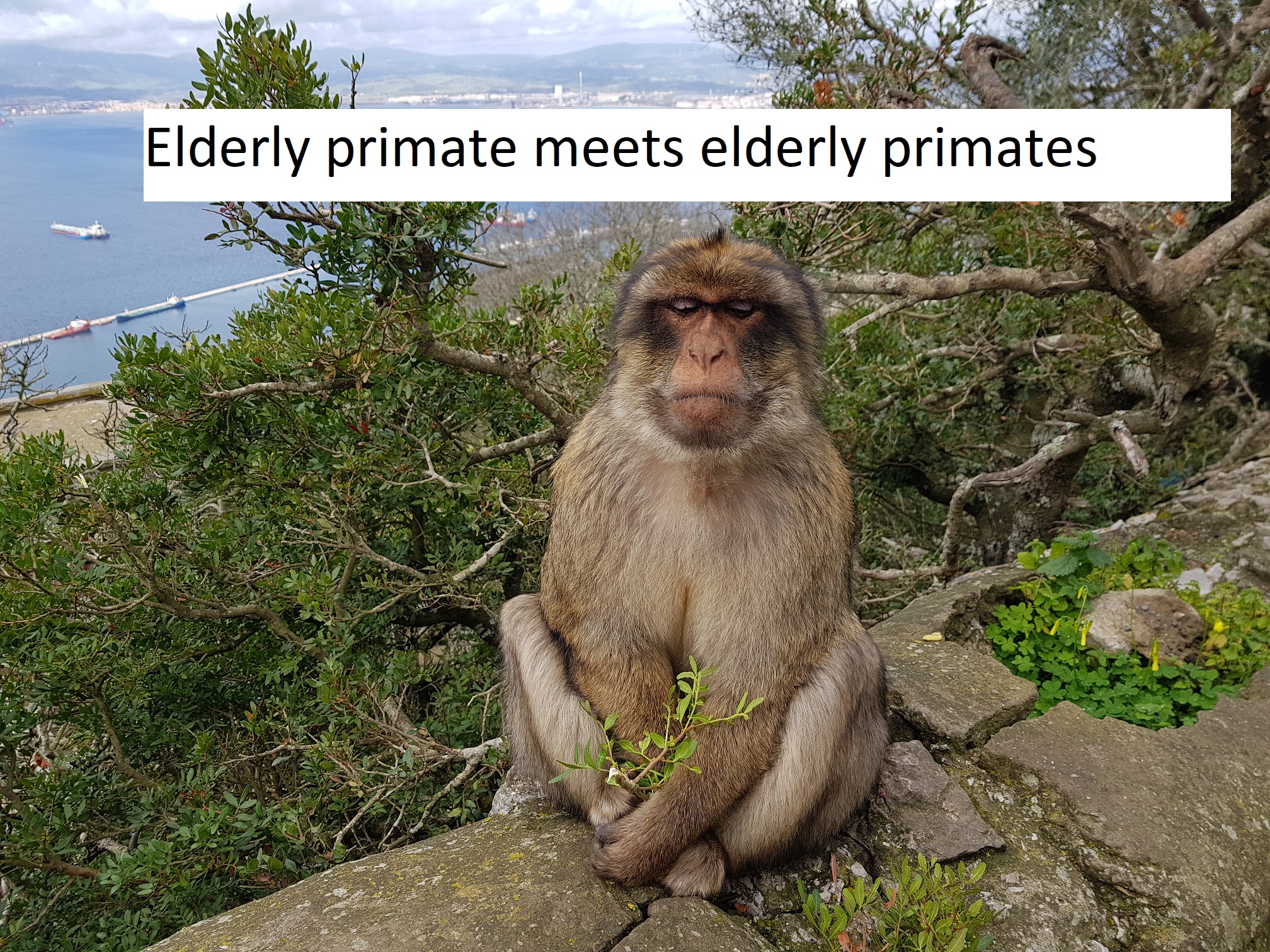 |
On the Why How and Downloads You can download the parts of the route we cycled. It needs to be unzipped and saved to a directory of your choice. You can then load it into the appropriate applications and GPS.
The Blog
The idea of the next few days is to cycle from Seville via Gibraltar to Malaga to get our ferry home. To do this the management has a plan, doesn't he always. We will cycle south along the flat lands towards Cadiz and then cut across the coastal mountains at their lowest point, stay in Gibraltar and go along the coast to Malaga.
But before we could start we had to get rid of the two cases we now had full of ski stuff. Almost as we expected from these ill fated packages the arranged collection failed to happen. The management had to take them to a local parcel dispatch depot and pay the ransom charge.
We liked bohemian Triana in Seville but it was good to be finding our way out of this large bustling city. It was not quite so good to lift the bikes over a fence onto what was supposed to be a cycle route around the docks. To avoid similar we crossed the river and finally said goodbye to Seville via a huge trading estate.
The next few km were fast and flat, for us that is. But the route took us through the “Parc Natural”. Our fine smooth road deteriorated into a broad rough stony track along the top of dykes. On the plus side we enjoyed the abundant wild life including flocks of flamingos in the warm sunshine. On the down side progress was slow and hard.
We had lunch in the shade of a pumping station before disaster struck in the form of multiple P words. Soon after lunch there was a huge explosion from the management's overloaded rear wheel. A sharp rock had made a large cut in the tyre and tube.
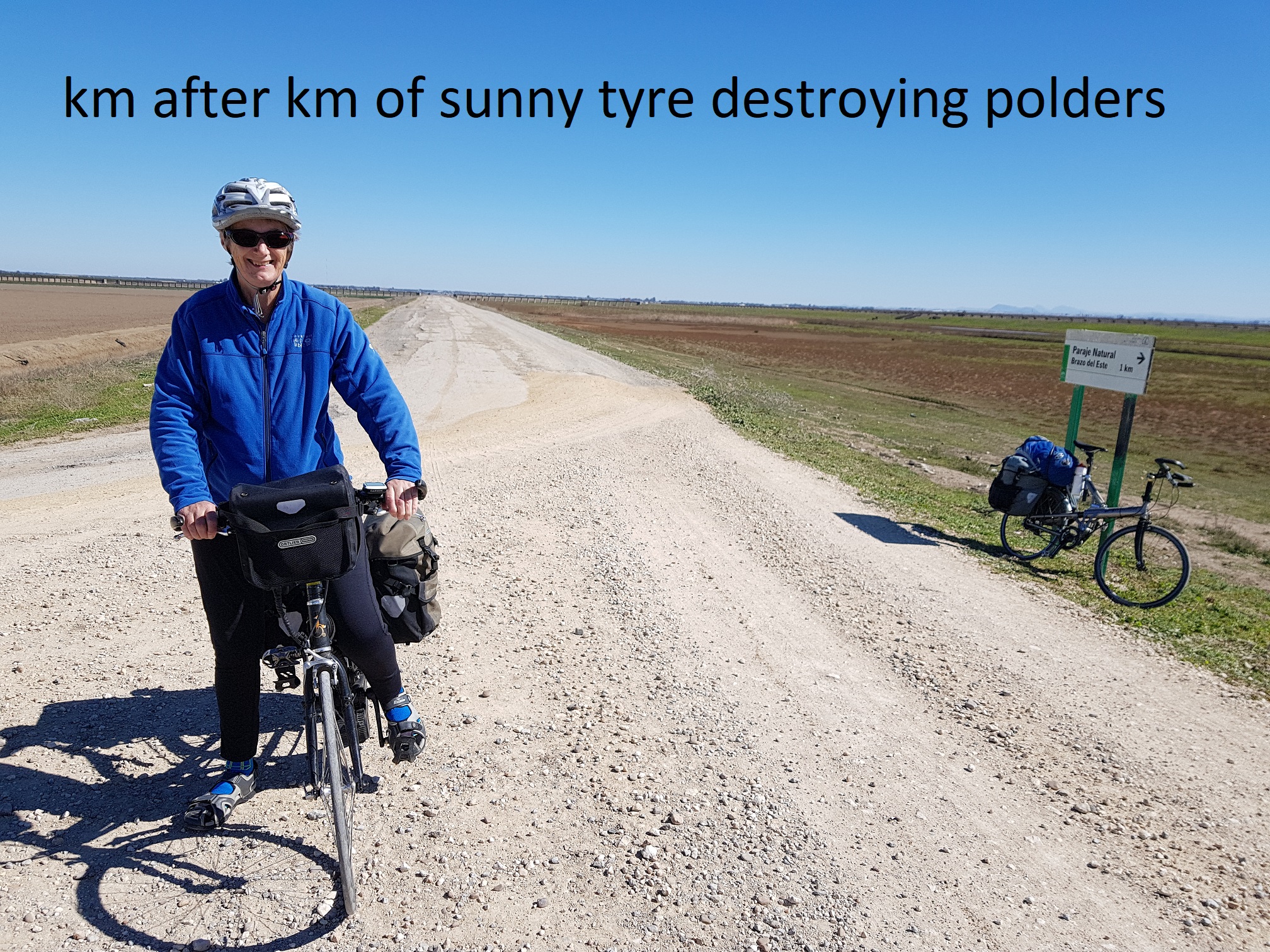 |
The Airnimal is not well suited to off road and because of this we carry spare tyres. It took about fifteen minutes to replace carefully the tyre and tube. And on we went cheerfully enough in the sunshine.
Seven punctures later we were thirsty, dirty and tired and we wondered if we would have to walk the last 10km. Luckily a repaired tube held up and we cycled into our apartment in Las Cabezas where the management repaired as many punctures as he had patches, overlooking the busy town square and the stork's nest in the church tower.
First thing we did next day was to buy a couple of puncture repair kits. We did not have a reliable spare tube between us and no logical reason for the events of yesterday. The management put more of the load onto the stoker and only used his front brake.
Today we are starting into the coastal mountains, through the white villages and towns of the Ronda area. The cycling was so good that the management forgot about the puncture risk. The road rolled on with almost no traffic and despite the climbs we made good speed.
There was almost no motor traffic but several groups and individual roadies going the other way. The road was as smooth as yesterday's was rough. We stopped to have coffee in a village café then lunch beside a huge reservoir followed by coffee and cakes in the next village.
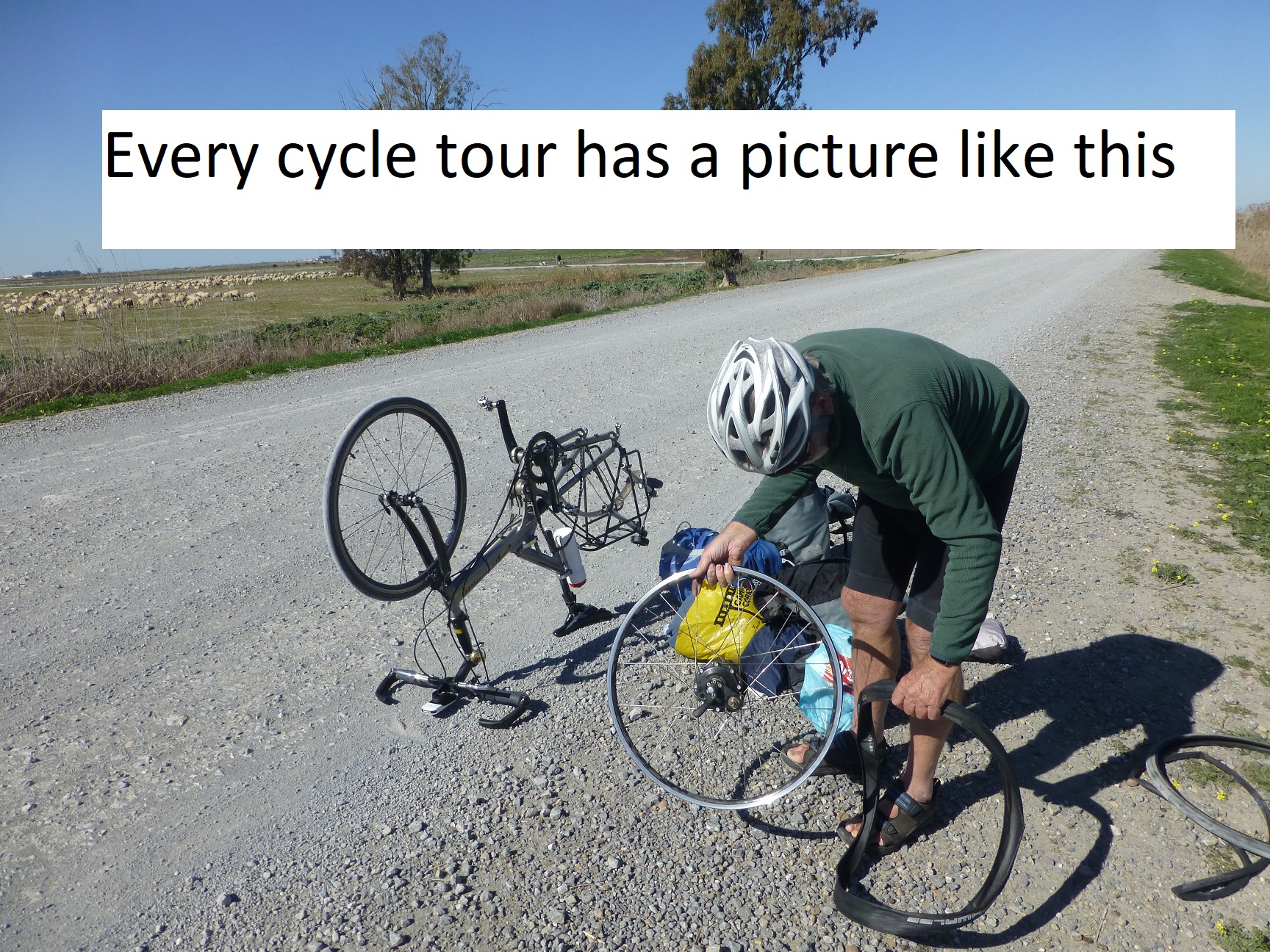 |
The stoker loved the red soil and the very green vegetation considering we are so far south. The reservoir looked like lakes dotted with islands. It was lovely in the sunshine.
The final climb to Algar was hard and looking at the computer the management was not surprised. We had climbed 900 metres today and were weary when we rolled into our Casa Rural without incident.
Algar is classed as a white village but it is large enough to be a small town. It was built in the late 1700s to house the poor and seems to be hidden in the lumpy terrain. We had booked two nights here which was fortunate because it enabled the management to mend the punctures. We may not be able to get this size tubes until we get home.
We also had the bonus of seeing the start of the weekend carnival and enjoying the town. We were the only obvious tourists. The school children paraded past our casa dressed as bakers and other traders, led by a pickup truck playing loud music, driven by a man in a girlie wig. It was a lot of fun but not billed as a fiesta.
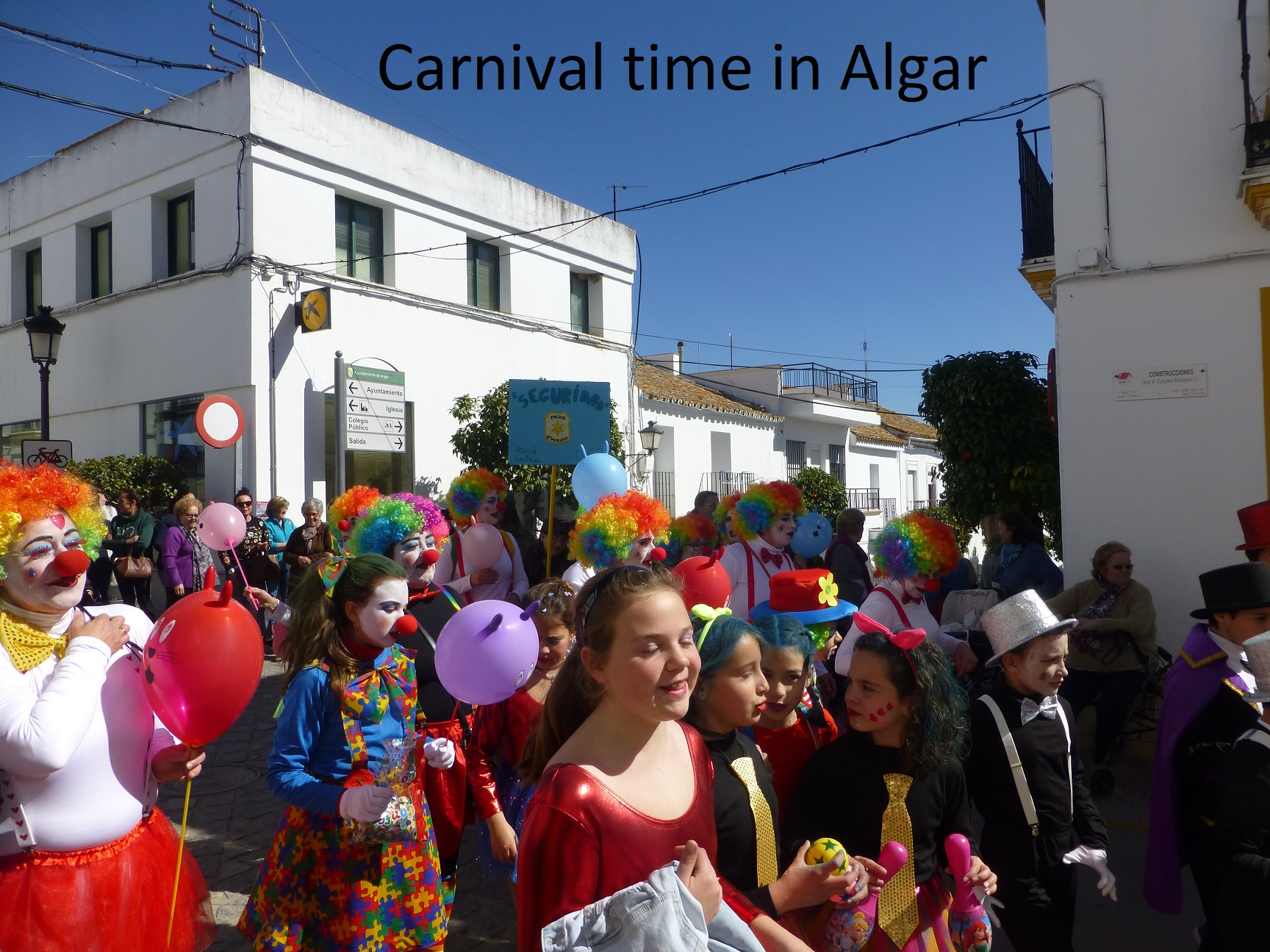 |
So onwards and ever upwards to Jimena. It was still sunny and we had a 500m climb over 20km to a pass. It was tough going and much more cloudy after the recent very nice weather. The management pushed on trying to keep his cadence up. The stoker's legs ached when she reached the welcome café at the pass.
Even though Jimena was a big descent from the pass, according to the GPS we still had over 300m of climb to do. Something of a roller coaster ride. The stoker was worried about her battery life. Even though she was working hard the battery had never been tested on this type of climb with fully loaded panniers. It held out to about the same degree as the management's legs i.e. not much left in all three by the end.
On the ride there was almost no traffic and that special mountain feel with the silence broken by cow and goat bells. There were spring flowers, huge birds of prey, tiny habitations and cows and goats on the road. It was not easy going but we always love our times in the mountains.
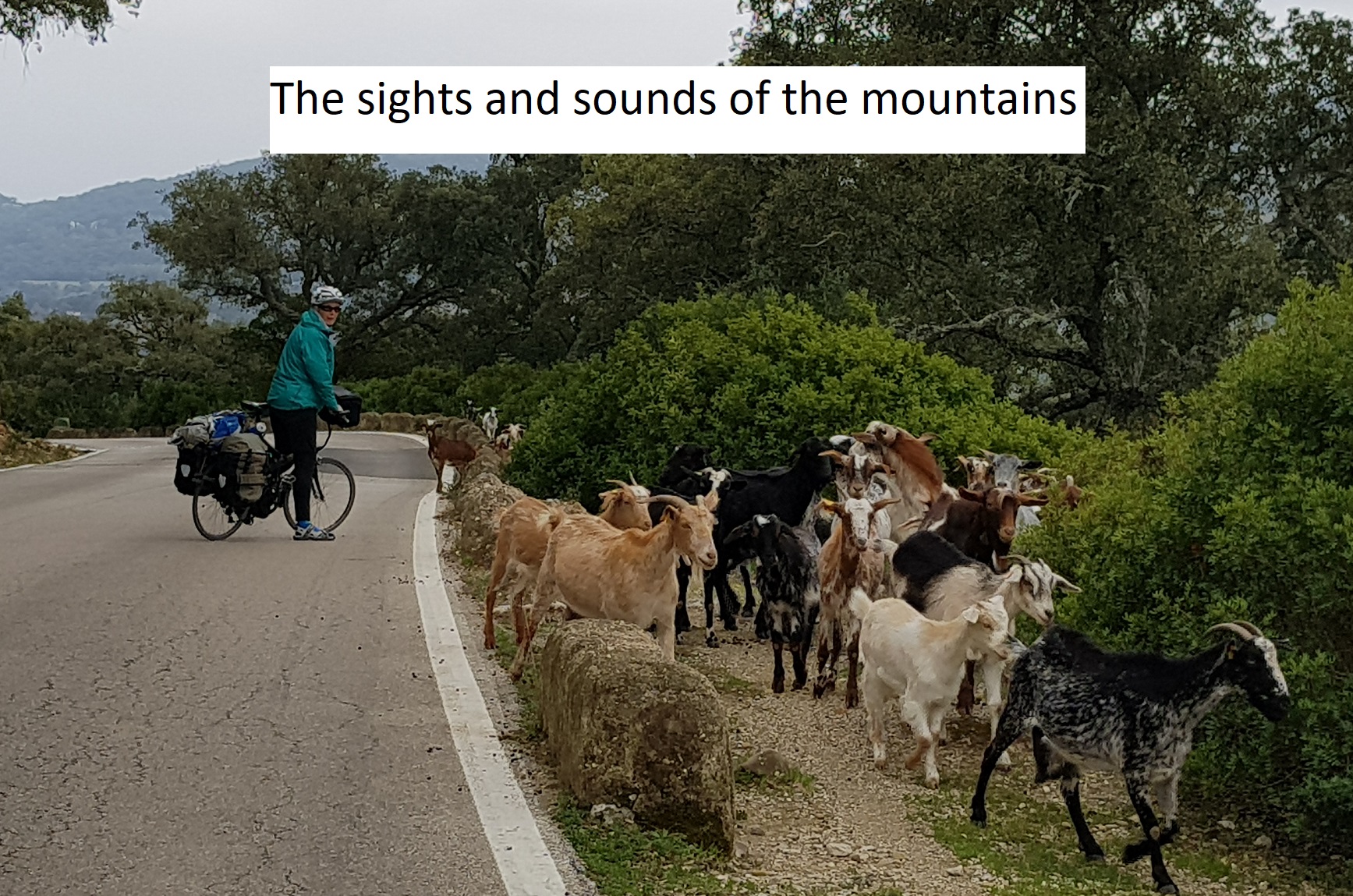 |
At Jimena we stayed, ate, and enjoyed the guitar playing in a lovely ethnic Spanish hotel. We suddenly heard lots of English spoken and realised that we were not far from the Rock of Gibraltar.
It was a bit damp as pushed our bikes down the very steep and slippery streets of Jimena. The busier roads on the way to the coast came as a shock after the enjoyment of the last three days.
At lunch time we suffered a puncture but the management repaired it very carefully and it held up well this time. He is still searching for a reason for the multiple punctures of Seville.
Our first view of the Rock could not have been less inspiring. In the foreground was a massive stinking oil refinery. The management was however pleased. Navigating had been very tricky and this was exactly what he expected. But he was not happy until he found the tiny road between the pollution and the sea, and his way to the customs point.
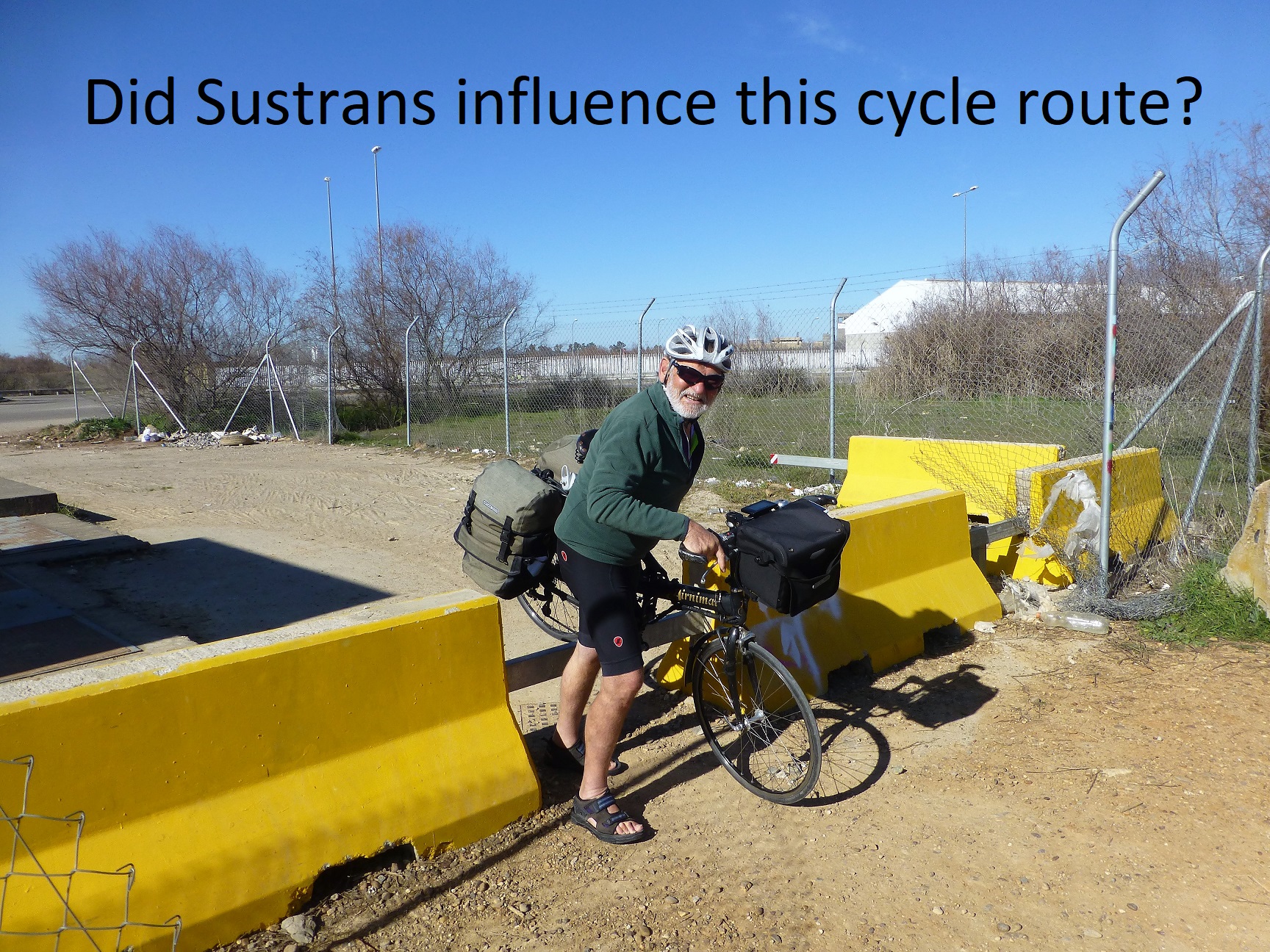 |
We “did” Gibraltar in two days and enjoyed it. It is a hugely impressive geological structure and we cycled right around the Rock. This involved 12km cycling and 400m of climb with several tunnels including one very long one. We also took the cable car to the top and walked down visiting several attractions on the way, all of which were worthwhile and St Michael's cave was exceptional.
We loved the monkeys. There are 300 or so of them and they stay mainly in the higher parts of the rock. They are completely habituated to humans but we felt still retained their freedom as wild animals. In fact they seemed much more at home in their tourism environment than the tourists and completely in charge. And for generations the Gibraltarians have loved and cared for them as they do now.
The UK has owned the Rock since 1703 and has shaped it in innumerable ways, physically and as a society. The management previously favoured giving it back to the Spanish but feels now that this is impractical, though he would not want to fight over it.
Like most of these kinds of places Gibraltar is tacky. Unlike similar “tax havens”, the Channel Islands for example, it does not feel particularly prosperous. The town could generally do with some essential repairs and a good lick of paint. We found it difficult to see why some big UK shops bother to have a presence here, especially as prices seemed similar to those at home.
It was nice to return to the Spanish mainland. We would recommend staying just over the border in Spain and visiting Gibraltar daily. If we go again we will do this. It is both cheaper and more civilised. It only takes five minutes to cycle across and there is a shuttle bus.
For the next few days, prior to getting our ferry home, we planned a leisurely ride north along the coast to Malaga. The idea was to enjoy some good weather and just use the bikes for short hops between resorts. “The best made plans of mice and men.........................”
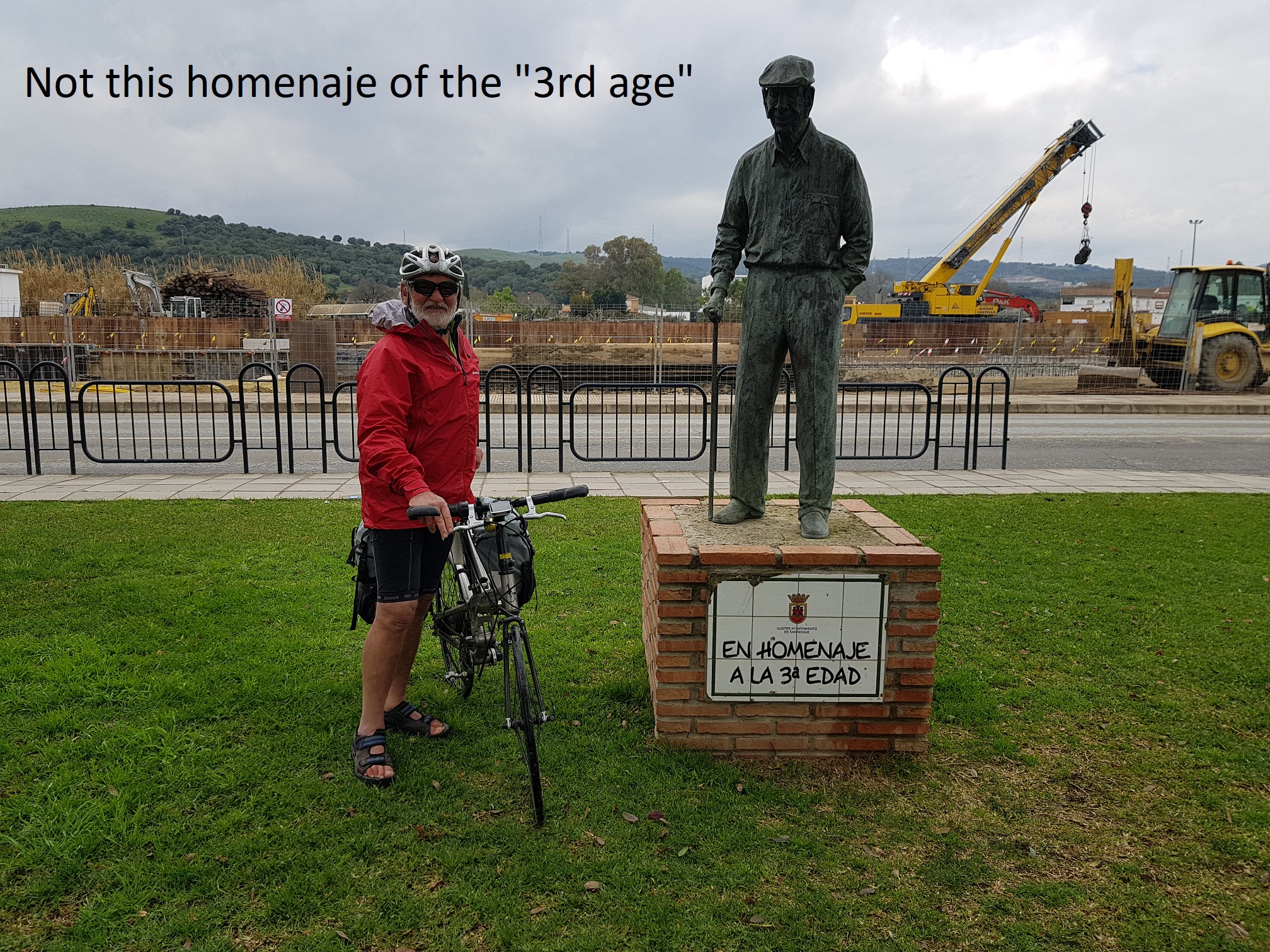 |
Sadly the road system is not conducive to cycle touring and in parts plain dangerous, even for us who are not that risk averse. Whatever the authorities say the coast path does not exist in many important places. The main coast road is a busy two lane speedway without hard shoulders which even cuts tourist towns in half. In most places there are no connecting minor roads.
Places like this have a very limited future in the world of healthy ecotourism. On the basis of the low prices they already seem to have over capacity. They need to get their act together quickly to even remotely rival some other Mediterranean resort areas.
Eventually for our own safety, literally to remain alive, we took the bus and train for about 35km. The management was not happy, it was even worse than having to turn back.
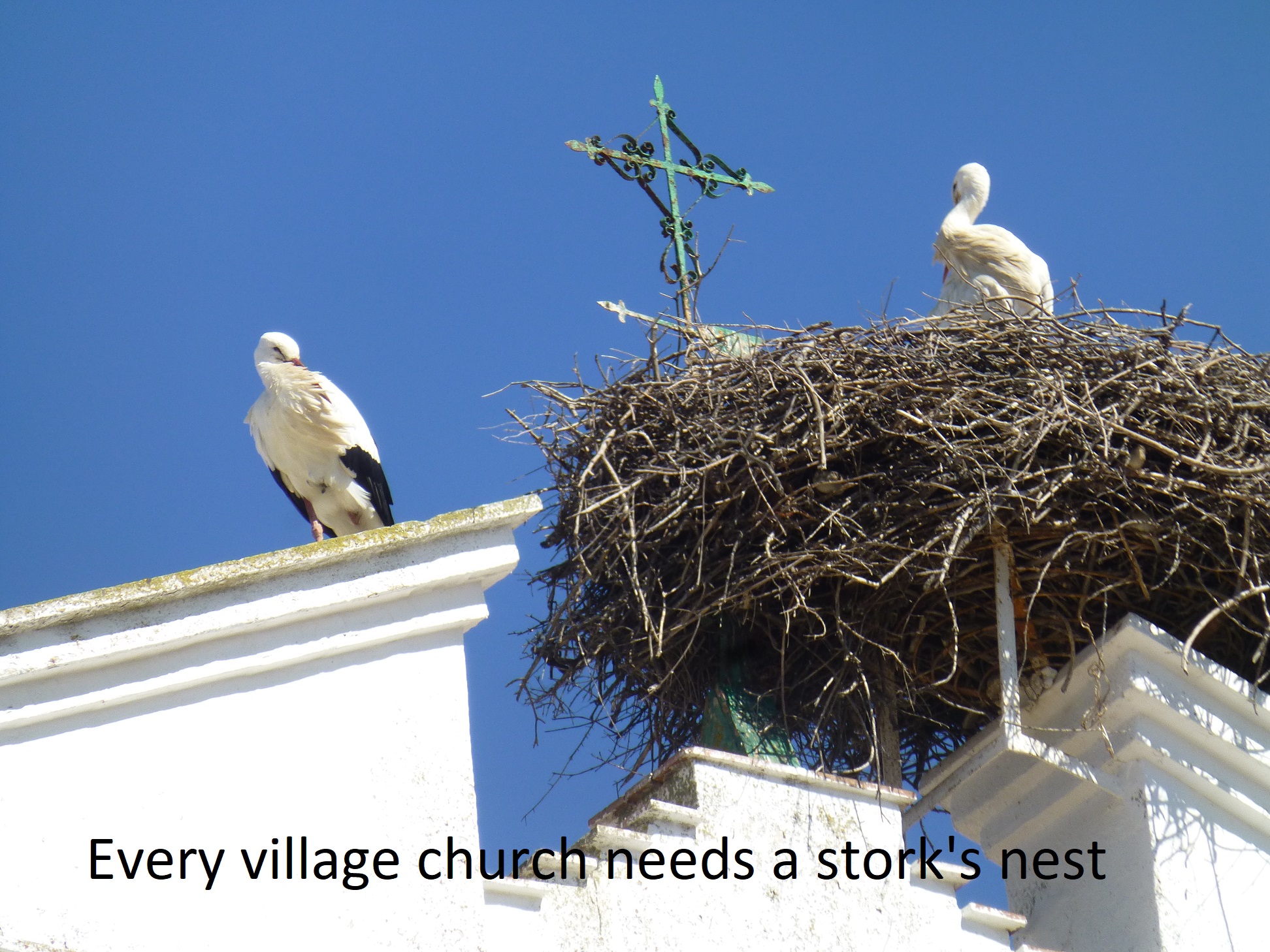 |
What seems the obvious alternative of going inland would only get us a short distance further along and involve some very serious climbs. We did manage most of the route with very careful navigation, danger, trespass, mud and carrying. Some wire cutters would have been useful but we did not bring them. They worked well in Scotland on Sustrans routes but we thought those barbaric days were over until we came here.
The weather was also very very wet. The UK was in the grip of snow, ice and blizzards thanks to “The Beast from the East” and storm Emma. Half of Spain was also cold and snowy. All we got was several days of rain, grey skies and sea, and temperatures of 16 degrees. We were expecting it to be hot enough to enjoy cycling in shirts and shorts along a lovely coastal route. We did not expect to be in full waterproofs on a roaring main road.